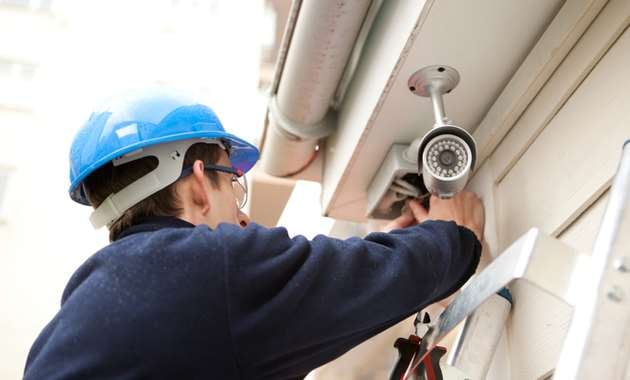Your Cart is Empty
Introducing RemoteLock | The Ultimate Universal Access Control Platform! Connect Your Hardware Today

Installing a home security system that includes video surveillance cameras is a good move to help protect your family and give you more peace of mind. While no one really debates this point, where exactly should you put them once you get them? To help answer that question; below are five things to consider when placing surveillance cameras.
While it’s obvious that not all attempted burglaries will happen the same way, statistics do reveal some fairly reliable trends that can help you determine where to place your cameras. For example, a study published by the FBI showed that 80% of all robberies and home burglaries are initiated through the front or back door, making these two locations prime candidates for your camera installations.
One thing that often goes overlooked when placing surveillance cameras is the safety of the equipment itself. You can’t put it past a criminal to try and cover or damage a surveillance camera if it is within reach. If at all possible, cameras should be placed at least nine feet above the floor/ground, so that it will be more difficult for would-be intruders to tamper with them.
Your surveillance cameras should have decent image quality – after all, what good is having video footage of a burglar if you can’t make heads or tails of how he/she looks? Your best bet would be to choose a camera with high-definition video capability, such as the Linear LD-D4-2MDI-312 indoor dome security camera, which features 1080p HD real-time video recording at 30 frames per second (fps). Using a camera like this will ensure a much sharper and more reliable image, which can really come in handy should the video evidence need to be reviewed by police.
Angles are a slightly different concern than positioning because you also have to make considerations for which direction(s) you would like to aim the camera, as well as what type of zooming or panning capability you plan to employ in your surveillance. Cameras that have smaller fields of vision should be trained upon very specific “trouble spots” (e.g., one window or door), while cameras that can rotate, zoom or pan to cover larger areas should be positioned to monitor more open places like porches, foyers, backyards, etc. Be mindful of potential visual obstructions that could become a problem in terms of where the camera is positioned.
For example, a camera that is positioned in an area where seasonal trees bloom could offer a clear view in the winter, but then a blocked view in the summer. In addition, if you have a camera positioned in a room where blinding sunlight comes through a window during the day, it could possibly hinder the camera’s field of vision for that span of time.
Some people argue that it’s better to keep your cameras hidden, while others believe it’s better to make them plainly visible. Those who are “pro-hiding” argue that if an intruder is not aware that they’re being filmed, it will be easier to get a clear picture of them, as they won’t be worried about making any attempts to evade an on looking camera. The “pro-visible” group argues that having a surveillance camera in plain view is a fantastic visual deterrent, as a would-be thief might think twice about invading your home due to the risk of being caught on tape. At the end of the day, this is largely a matter of personal preference, and it’s up to each individual to determine what they think will be the right move.
As you can see, there are quite a few important things to consider when placing surveillance cameras. Just keep the above tips in mind when installing your “eyes in the sky,” and above everything else, stay safe out there!
© 2025 GoKeyless. All rights reserved. Privacy Policy. Terms of Use. Powered by Brandography.